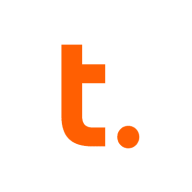

Microsoft Parallel Data Warehouse and Teradata compete in the data warehousing category. Teradata seems to have the upper hand due to its performance and scalability.
Features: Microsoft is integrated with the Microsoft ecosystem, making it suitable for users within that environment. It provides cost-effective solutions for large data volumes and offers flexibility in managing various database systems. Teradata is known for its fast data processing, scalability, and efficient parallel processing which is crucial for handling large data tasks. Its Teradata Optimizer and analytics integration are standout features, allowing it to perform complex queries efficiently.
Room for Improvement: Microsoft could enhance its integration with non-Microsoft tools and improve scalability, as well as address the complexity of setup. The cost and concurrent query limitations are areas needing attention. Teradata faces criticism for high costs, slower cloud technology adoption, and the need to handle unstructured data better. More flexible pricing and improved cloud offerings are also required.
Ease of Deployment and Customer Service: Microsoft offers deployment flexibility across on-premises, public cloud, and hybrid environments, but faces challenges in direct support access. Teradata supports on-premises and cloud deployments, excelling in hybrid cloud integration. While customer service is rated similarly, Teradata's comprehensive support is well-suited for enterprise needs.
Pricing and ROI: Microsoft is cost-effective when integrated with Azure, but may be expensive for smaller users. It offers solid ROI for managing large data volumes efficiently. Teradata, despite its premium pricing, provides significant returns through its performance and is appealing to large enterprises. Efforts to introduce flexible pricing models have been made, yet its high cost can be a barrier for smaller projects.
At least fifteen to twenty percent of our time has been saved using Teradata, which has positively affected team productivity and business outcomes.
Independent research showed that Teradata VantageCloud users achieved an average ROI of 427% across three years with payback under a year, demonstrating the platform's ability to deliver a strong financial return.
We have realized a return on investment, with a reduction of staff from 27 to eight, and our current return on investment is approximately 14%.
I would rate my experience with technical support around six on a scale of 1 to 10 because I have not had a particular experience with technical support.
The customer support for Teradata has been great.
They are responsive and knowledgeable, and the documentation is very helpful.
Customer support is very good, rated eight out of ten under our essential agreement.
I give the scalability an eight out of ten, indicating it scales well for our needs.
As a consultant, we hire additional programmers when we need to scale up certain major projects.
Whenever we need more resources, we can add that in Teradata, and when not needed, we can scale it down as well.
This flexibility allows organizations to scale according to their needs, balancing performance, cost, and compliance requirements.
This expansion can occur without incurring downtime or taking systems offline.
Microsoft Parallel Data Warehouse is stable for us because it is built on SQL Server.
Its massively parallel process architecture allows the platform to distribute workload efficiently, enabling organizations to run heavy analytic queries without compromising speed or stability.
I find the stability to be almost a ten out of ten.
The workload management and software maturity provide a reliable system.
It would be better to release patches less frequently, maybe once a month or once every two months.
Addressing the cost would be the number one area for improvement.
When there are many users or many expensive queries, it can be very slow.
I want to highlight two features for improvement: first, storing data in various formats without requiring a tabular structure, accommodating unstructured data; and second, adding AI ML features to better integrate Gen AI, LLM concepts, and user-friendly experiences such as text-to-SQL capabilities.
Unlike SQL and Oracle, which have in-built replication capabilities, we don't have similar functionality with Teradata.
The most challenging aspect is finding Teradata resources, so we are focusing on internal training and looking for more Teradata experts.
Microsoft Parallel Data Warehouse is very expensive.
Teradata is much more expensive than SQL, which is well-performed and cheaper.
Initially, it may seem expensive compared to similar cloud databases, however, it offers significant value in performance, stability, and overall output once in use.
Role-based access control (RBAC), strong audit and compliance features, high availability, fault tolerance, and encrypted data at rest and in-transit are key features.
The columnstore index enhances data query performance by using less space and achieving faster performance than general indexing.
Microsoft Parallel Data Warehouse is used in the logistics area for optimizing SQL queries related to the loading and unloading of trucks.
There's a feature that allows users to set alerts on triggers within reports, enabling timely actions on pending applications and effectively reducing waiting time.
Teradata's security helps our organization meet compliance requirements such as GDPR and IFRS, and it is particularly essential for revenue contracting or revenue recognition.
Its architecture allows information to be processed efficiently while maintaining stable performance, even in highly demanding environments.
It facilitates data integration, where we integrate and analyze data from various sources, making it a powerful and high-quality reliable solution for the company.
| Product | Market Share (%) |
|---|---|
| Teradata | 9.5% |
| Microsoft Parallel Data Warehouse | 1.7% |
| Other | 88.8% |


| Company Size | Count |
|---|---|
| Small Business | 16 |
| Midsize Enterprise | 6 |
| Large Enterprise | 21 |
| Company Size | Count |
|---|---|
| Small Business | 28 |
| Midsize Enterprise | 13 |
| Large Enterprise | 52 |
The traditional structured relational data warehouse was never designed to handle the volume of exponential data growth, the variety of semi-structured and unstructured data types, or the velocity of real time data processing. Microsoft's SQL Server data warehouse solution integrates your traditional data warehouse with non-relational data and it can handle data of all sizes and types, with real-time performance.
Teradata is a powerful tool for handling substantial data volumes with its parallel processing architecture, supporting both cloud and on-premise environments efficiently. It offers impressive capabilities for fast query processing, data integration, and real-time reporting, making it suitable for diverse industrial applications.
Known for its robust parallel processing capabilities, Teradata effectively manages large datasets and provides adaptable deployment across cloud and on-premise setups. It enhances performance and scalability with features like advanced query tuning, workload management, and strong security. Users appreciate its ease of use and automation features which support real-time data reporting. The optimizer and intelligent partitioning help improve query speed and efficiency, while multi-temperature data management optimizes data handling.
What are the key features of Teradata?
What benefits and ROI do users look for?
In the finance, retail, and government sectors, Teradata is employed for data warehousing, business intelligence, and analytical processing. It handles vast datasets for activities like customer behavior modeling and enterprise data integration. Supporting efficient reporting and analytics, Teradata enhances data storage and processing, whether deployed on-premise or on cloud platforms.
We monitor all Data Warehouse reviews to prevent fraudulent reviews and keep review quality high. We do not post reviews by company employees or direct competitors. We validate each review for authenticity via cross-reference with LinkedIn, and personal follow-up with the reviewer when necessary.